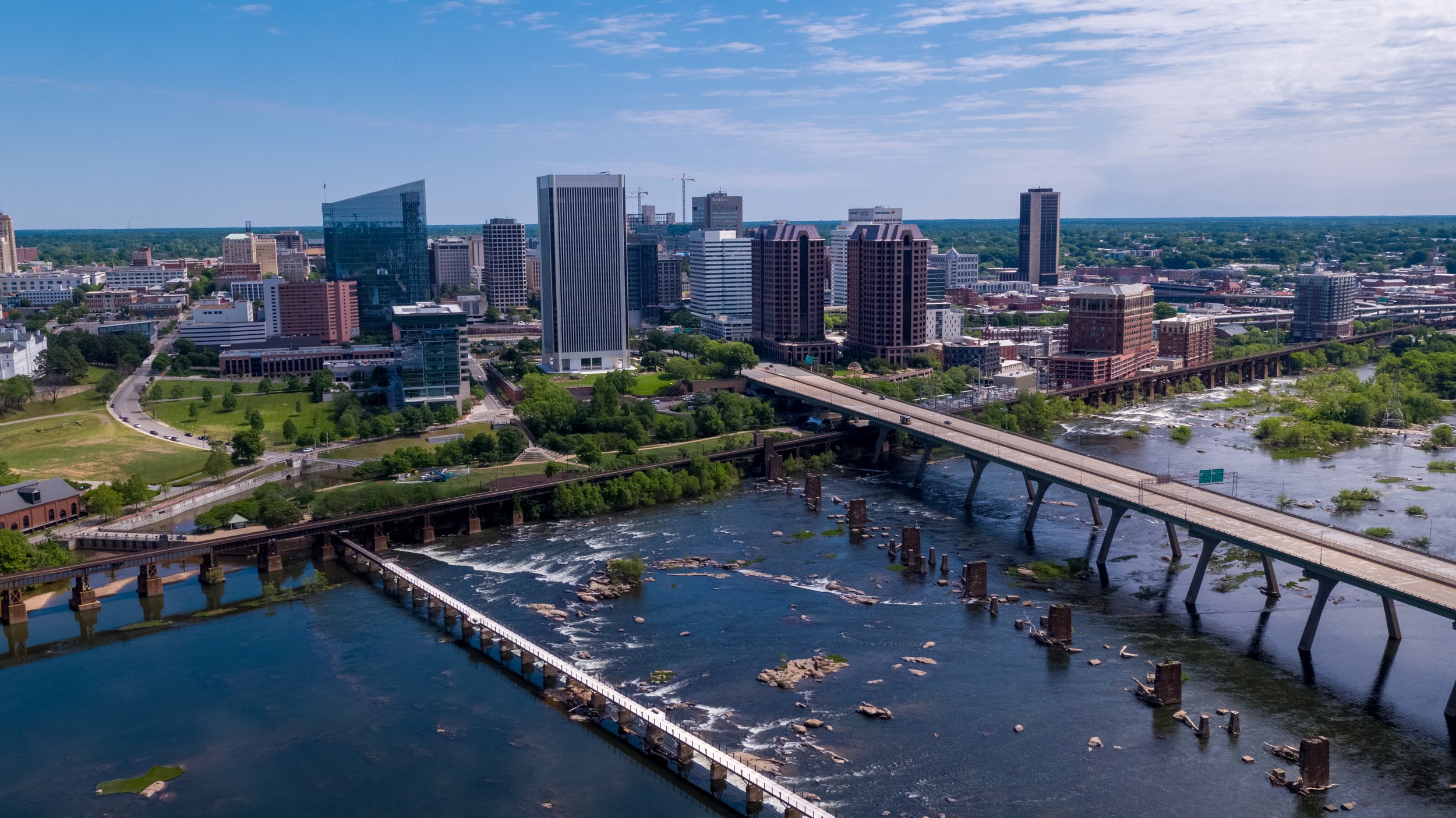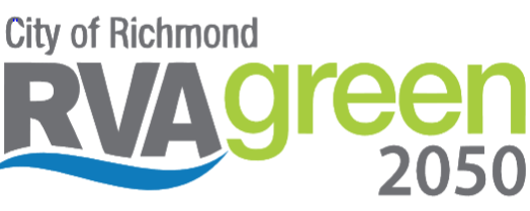
Buildings and Energy
Accelerate the equitable transition to healthy, resilient, climate neutral buildings and energy sources.
Greenhouse gas emissions generated from the energy used within Richmond’s building stock made up the largest percentage of Richmond’s 2018 carbon footprint at 66%. Looking at emissions by source, within Richmond’s geographical boundaries, emissions from electricity usage made up 47% of the 2018 carbon footprint due to the mix of fuel sources used to produce electricity. The use of natural gas made up 18% of Richmond’s 2018 carbon footprint.
Successful implementation of all the strategies and actions in the Buildings & Energy Pathway for both municipal and private sector buildings will move Richmond well on its way to achieving the 2030 and 2050 greenhouse gas emissions reductions goals and is projected to reduce emissions from all buildings 36% by 2030 and 80% by 2050 towards RVAgreen 2050’s overall emissions reduction goals.
Implementation of strategies in this Pathway to lower emissions generated from building energy usage and improve building resilience to heat and flooding will also create many co-benefits including cost savings on utility bills, lower building maintenance costs, improved health from better indoor air quality, electric grid stability, energy independence, workforce development and economic development opportunities. The City is committed to improving neighborhoods and the lives of the people who live in them, which is why these efforts are aligned through Mayor Stoney’s Equity Agenda, Richmond 300, the Affordable Housing Trust Fund, and city department priorities.
Business As Usual (BAU)
Max Scenario
Buildings and Energy Objectives and Strategies
BE-1: Achieve climate neutrality and increase resilience in government buildings, infrastructure, and operations.
BE-1.1: Municipal Energy Efficiency Program: Develop a program to achieve the energy efficiency goals of RVAgreen 2050 and Richmond 300.
BE-1.2: Municipal Clean Energy and Net Zero Construction: Incorporate measures toward the goal of converting all city buildings to clean energy by 2050.
BE-1.3: Municipal Climate Impact Mapping: Establish a protocol for tracking greenhouse gas emissions and planning for climate impacts.
BE-1.4: Municipal Resilient Infrastructure Assessment: Conduct a climate vulnerability and risk assessment of all city property (including buildings and parcels). Identify and prioritize properties for specific resilience projects.
BE-2: Maximize energy efficiency, performance and resilience in all existing buildings.
BE-2.1: Residential Energy Burden: Implement measures to reduce the energy burden of Richmond’s most vulnerable communities and improve residential resilience to climate change.
BE-2.2: Commercial Energy Efficiency Programs: Develop policies, incentives, and financing mechanisms to improve commercial energy efficiency; offer assistance and technical expertise to those that are financially challenged and facilitate workforce development.
BE-3: Ensure all Richmonders have equitable access to affordable and renewable clean energy.
BE-3.1: Solar Energy Education & Outreach: Provide equitable education and outreach to make homes and small businesses healthy, safe, and affordable through solar installations, focusing on frontline communities reducing disproportionately high energy burden in these neighborhoods.
BE-3.2: Solar Installation Incentives and Access: Encourage solar installations through the removal of zoning restrictions, incentivizing opportunities, and increasing funding for microgrids.
BE-3.3: Clean Energy Workforce Development: Establish training programs, apprenticeships, and a conservation corps/job placement program in low-income and diverse neighborhoods to build capacity for jobs related to solar installation and maintenance, weatherization upgrades, and energy efficiency auditing (e.g., prison to solar training).
BE-4: Achieve climate neutrality and maximize resilience in all new buildings.
BE-4.1: Net-Zero Energy Design: Incentivize builders to incorporate measures to advance net-zero energy design and green building in all new buildings.
BE-4.2: Resilient Design Guidelines: Develop Resilient Design Guidelines and incentivize builders to incorporate design measures to reflect a changing climate, increased precipitation and flooding in concert with a public education campaign to convey the benefits of adaptive and resilient buildings.
BE-4.3: Construction & Energy Code Enforcement: Prioritize the most recent energy requirements in all new construction, site plan approvals, and retrofits to existing buildings.








